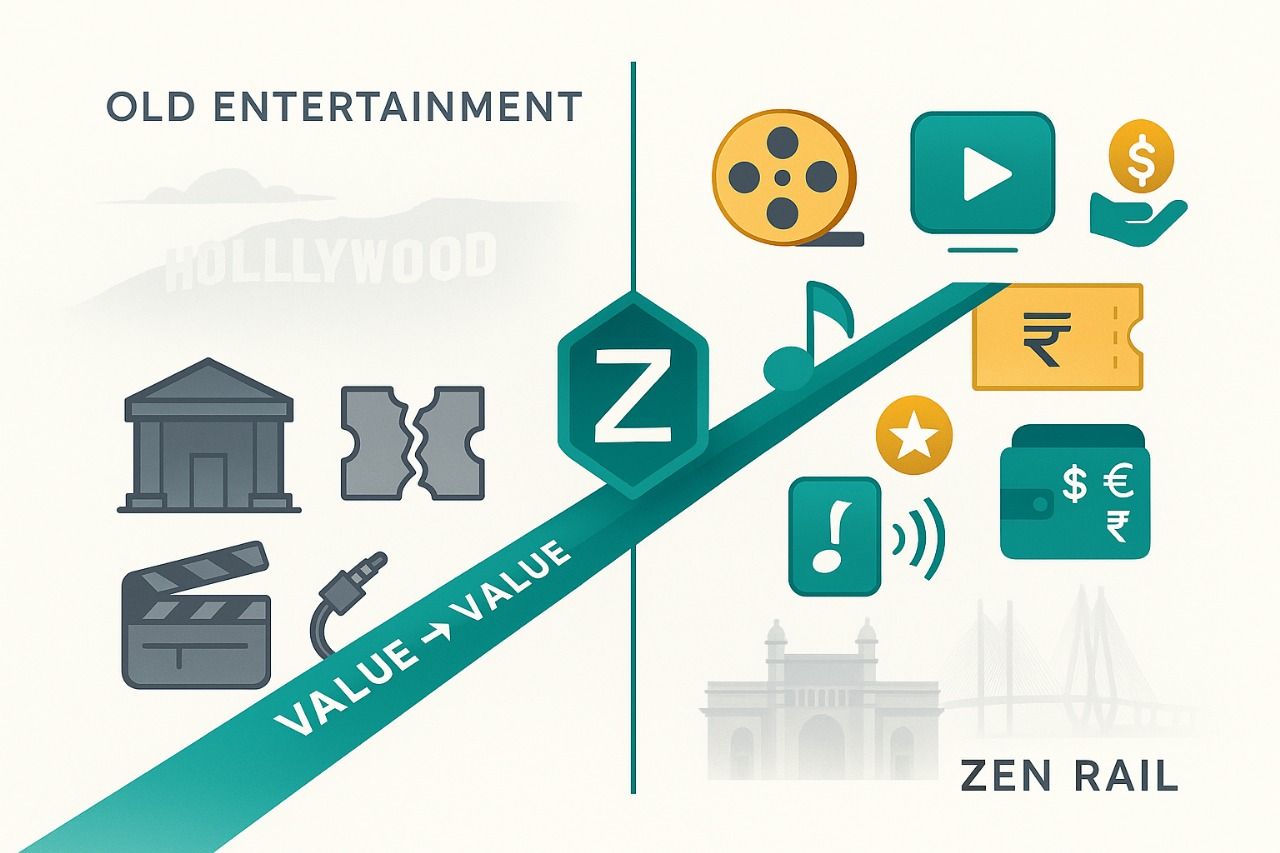
Is your branding as attuned to female audience members as it should be? As a growing number of businesses embrace the reality that women pack a real punch when it comes to purchasing power, it’s a good time to raise the question.
Because recent research tells us that the contemporary woman steers a mighty 80 percent of purchases, making marketing to women a must for the majority of brands seeking to build their momentum.
However, there is a great deal of nuance to explore when striving to connect with the minds of modern consumers, not least because men are also shopping more, particularly online. Meanwhile, traditional notions of what men and women might be more likely to buy are proving redundant as women purchase over 50 percent of historically male-associated products, including cars and gadgets.
Without a doubt, we can all celebrate that the days of pink for girls and blue for boys are finally receding into our collective rearview, and strides into the realm of gender-inclusive branding are increasingly being taken.
But, what does all of this mean for brands trying to maximize their audience reach? Crucially, it represents a call to action—specifically, a call to delve into the psychology of not only branding for women, but ultimately innovative gender-inclusivity and creatively branding towards people rather than preconceived notions.
If shoppers are actively erasing the old divisions between tired tropes, then it’s time for businesses to do the same, and here are some great launch points to get started from.
Marketing to Women Doesn’t Mean Going “Girly”
While there may be plenty of shoppers out there who adore a rosey-hued or feminine aesthetic, that doesn’t make these qualities the benchmarks for appealing to female consumers.
Sure, it may seem easy to fall back into the convenient arms of an audience segmented by gender and targeted with traditional ideals, but there is much more power to be found in providing consumers with a range of functional and great-looking choices—catering to personal preferences with relevant styles, sizes, or color options—based on time spent listening to their wants and needs in the now.
Yes, there is no escaping that marketing assumptions tend to be a turn-off for modern female consumers. Plus, as marketing expert Gaby Barrios pointed out so succinctly in her Ted Talk, “because gender is such an easy thing to find in the market, to target, and to talk about, it actually distracts you from the fun things that could be driving growth for your brands.”
She makes a good point, you’ll probably agree. So, rather than tripping into the pitfall of gendered design and marketing, we can tap greater wisdom and focus instead on delivering features that will fulfill the heeded needs of today’s female consumers while remaining universally appealing and valuable.
This might include incorporating product multi-functionality to support busy lifestyles or expanding aesthetic customizations. Vitally, the key to delivering both problem-solving and pleasure-providing solutions to a larger demographic is the exact opposite of throwing up barriers of perception between shoppers and what’s placed before them.
The Power of Visuals and Storytelling
While female-focused “pink it and shrink it” branding may be outmoded, it’s handy to know that visual appeal remains a critical factor when making marketing to women a priority. Products that are as thoughtfully designed in terms of beauty as they are functionality are likely to land better across gender-inclusive audiences.
Why might that be? Well, studies reveal that when it comes to shopping, men tend towards a utilitarian approach, but women are often more hedonic consumers. This means that men are more likely to focus on practicality and functionality first, while women also place a strong emphasis on emotional and experiential pleasure drawn from things like aesthetics and storytelling.
The takeaway here is that attention invested in things like presentation, color, texture, fragrance, form, and associated messaging will increase appeal for female audiences, while a portion of men will doubtless enjoy the benefits of these enhancements too.
Simultaneously, brand storytelling should be seen as a super-power in the wings—because making story-driven messaging a key element of your marketing is an effective way to boost appeal among both male and female shoppers. However, it’s worth keeping in mind that[ only 29 percent of women in America feel that they are accurately represented in advertising. So, if you’re going to paint a picture for your customers, make sure that it’s a relatable one!
Marketing to Women Means Full-Brain Engagement
We mentioned that female consumers may find more value than men in the hedonic aspects of their purchases, but that doesn’t mean that the practical aspects of any product offering will get lost along the way.
Fascinatingly, understanding has grown in recent years both in terms of the way that we use our brains for decision-making and subtle differences between the way that men’s and women’s minds work when shopping. These insights allow us to better grasp why gender-inclusive branding requires a multi-faceted approach.
Scientific theories have long abounded that the left brain hemisphere is more involved with utilitarian processes such as critical thinking and reasoning, while the right hemisphere takes the reins for things that lend to hedonic experiences such as creativity and intuition. When it comes to branding for women and men at once, it may be useful to know that in this regard, our brains really are all wired just a little differently but that’s actually something we can work with.
It’s not that men’s or women’s brains power up a larger number of neuronal connections when shopping, but rather that information processing doesn’t always flow in entirely the same way. An analysis of hundreds of MRIs highlighted that men tend to have greater interconnection within each distinct brain hemisphere, while women tend to have and utilize more neuronal connections linking across between one hemisphere and the other.
This may explain why layering emotional messaging with practical and rational information is especially effective when branding and marketing to women. While so-called left-brain messaging is likely to hit a home run with male shoppers, interspersing it with emotional storytelling that allows women to visualize and connect with their user experience will guarantee greater gender-inclusive appeal.
Showcasing Values and Benefits When Marketing to Women
This brings us neatly to the next key question to consider when branding for women, which is: what are the benefits that are most revered by modern female consumers? As it turns out, looking beyond the way that a product is used, its flavor, functionality, its aesthetic appeal, or even its associations, today’s female shoppers are focused increasingly on health and sustainability—for themselves, for their families, and for society at large.
As Nicole Fry of First Beverage Group articulated some years back, “increasingly, women consumers are asking the questions about ingredients and how they are made—women are driving that movement. Over time, lower fat and calories have given way to low sugar, natural/organic, fair trade, and non-GMO.”
And of course, this idea doesn’t only apply to food and beverages, but also the full spectrum of consumables from household products to fashion and beyond. Crucially, making a point of putting value-based product information on the label will stir up greater brand interest among women while no doubt appealing to a portion of men too. If it’s organic, non-toxic, or locally sourced, it’s definitely savvy to say so.
Does that mean that green or healthy claims should be the loudest part of your product presentation? Research suggests that the answer is no—and this understanding is something that can be thoughtfully leveraged.
For some years now, brands have been feeling their way around the challenge that some men perceive overtly eco-friendly behavior as unmanly. However, this doesn’t mean that branding can’t speak to everyone. When we consider the importance of aesthetics and user experience for female consumers, it points to the idea that those deal-closing value-based credentials should be discreetly on display rather than placed front and center, so it’s a win-win for everyone.
Putting a Positive Slant on Branding for Gender Inclusivity
If your current branding messages are built around the premise of showing customers what they want to avoid, it’s probably time to change tack. The reason, according to audience analytics company Nielsen, is that “the female brain is programmed to maintain social harmony, so messaging should be positive and not focus on negative comparisons or associations.”
This makes zeroing in on the life enhancements that products can provide far more helpful than focusing on what they’ll help consumers avoid. Presenting product and brand advantages will contribute to a better recipe for nurturing customer loyalty among women who can then spread the word.
Interestingly, the Covid-19 pandemic seems to have only served to increase the focus of female shoppers on seeking out positive messaging from the brands they bring home and publicly align themselves with. So, steering clear of adding to the negative noise is the smarter choice and a much better option than being actively tuned out.
Dropping the Tropes and Facilitating Self-Expression
Having already touched on the misrepresentation of women in brand storytelling, let’s dig into the numbers a little further. Disappointingly, a recent study on advertising by Cannes Lions found that female characters continue to be visually and verbally objectified in modern marketing and are four times more likely to be shown in revealing clothing than male characters.
These kinds of stereotyped approaches to branding for women likely serve to alienate female consumers more than attract them. In reality, marketing to women on the basis of inaccurate homogeneity is a strategy that will disappoint beyond the distaste aspect, simply because the priorities, tastes, values, perspectives, and lifestyles of women are so immensely variable. A stronger tactic would be to focus on women as diverse individuals within the human demographic.
Breaking the mold on such icky tropes on behalf of their customers, a number of high-profile companies are leaning into branding that focuses on customer uniqueness and self-expression rather than gender—ranging from Lego choosing to shed long-standing biases by no longer labeling their toys as “for girls” or “for boys” to Rihanna’s Fenty using models of every size to market gender-neutral beauty products that cater to everyone.
The success of these branding efforts aligns with the reality that the world has moved beyond laned identity structures. As almost half of Gen Z consumers indicate that they value brands that don’t classify their products as being for men or women, the companies still dragging their heels risk misinterpreting the needs of some sections of their audience and completely ignoring others.
In contrast, brands that are marketing to women with greater nuance and actively engaging their full audience whenever possible are lighting the way forwards.
Reframing Your Brand Strategy With Women in Mind
So, we know that branding to women is essential given their purchasing power, but also that old-fashioned approaches just won’t cut the mustard anymore—in fact, they’ll alienate women and exclude men too, making them all but useless.
Instead, providing innovative human-centric solutions that facilitate self-expression, light up both brain hemispheres, and focus on the positive will go much further for forging meaningful full-audience marketing connections.
The bottom line is that from packaging design to product attributes, intelligent and creative branding for women can translate into branding that serves everyone. This makes now the time to take a deep dive into your demographic, segment based on shared truths rather than tropes, and sculpt your offering based on meeting needs that are practical, aspirational, and innovative—but also truly tangible.
Hopefully, you’ll find that the factors outlined above support much more fruitful conclusions when considering the usual branding value proposition questions such as how products will improve consumers’ lives or make them easier. Because while gender-inclusive branding may be a delicate dance that requires conveying all the right messaging, its mastery is sure to reward.




